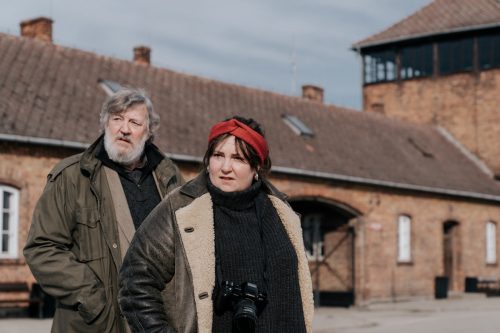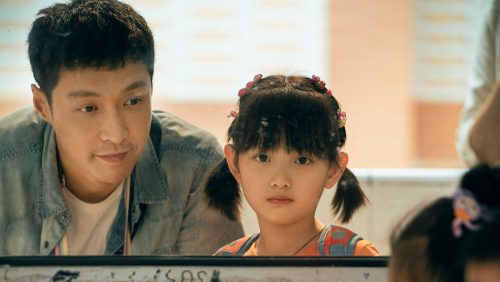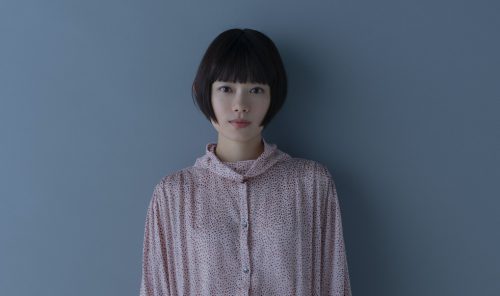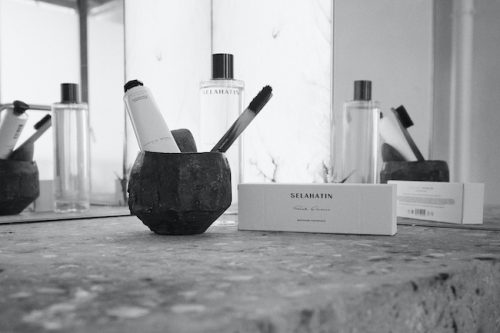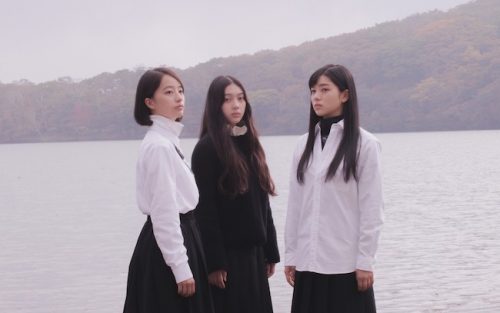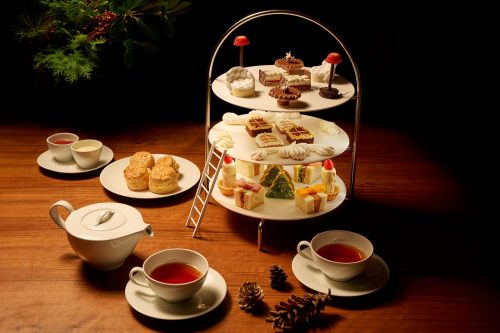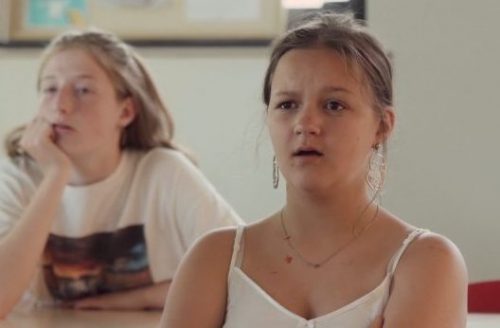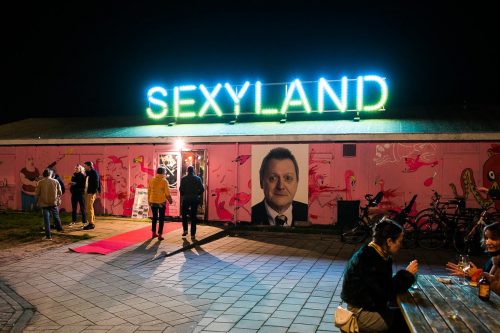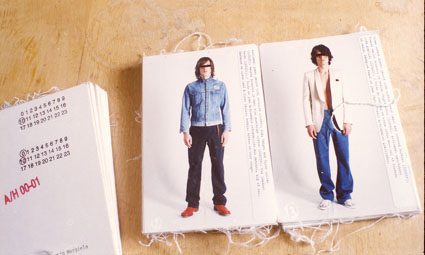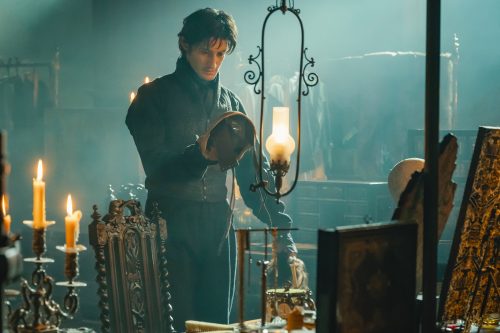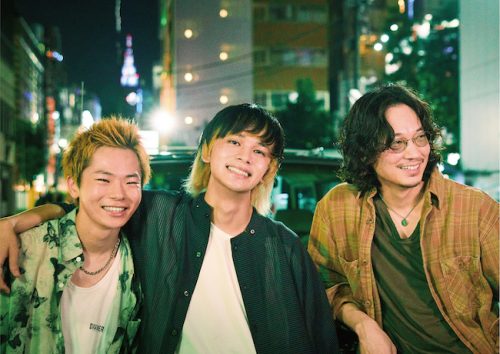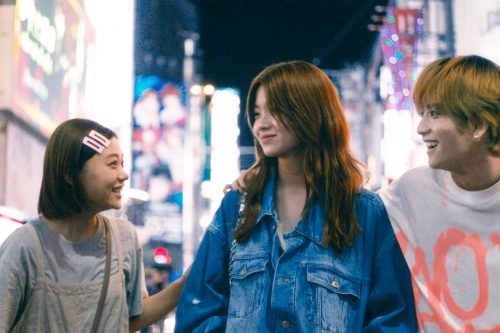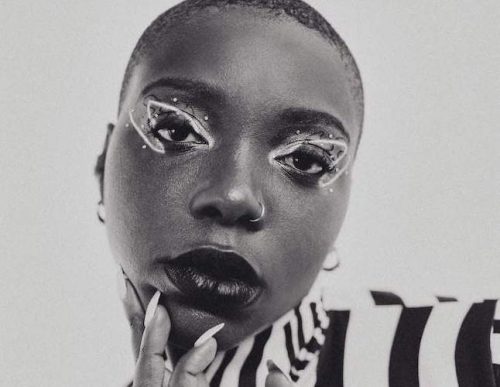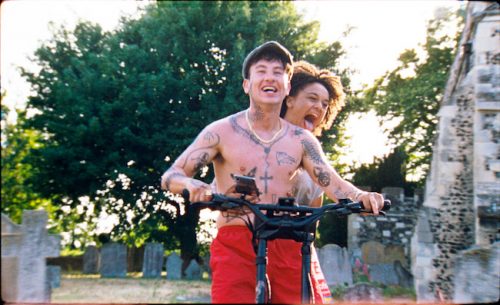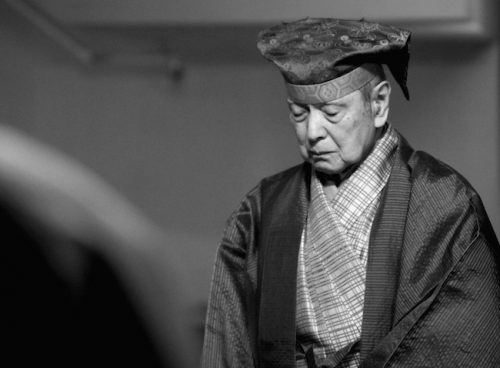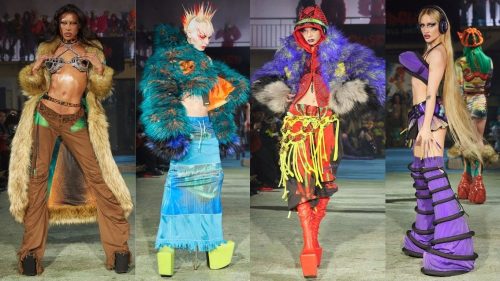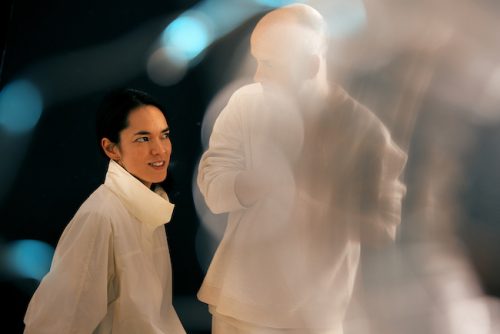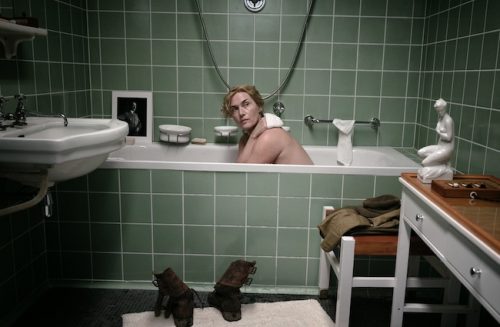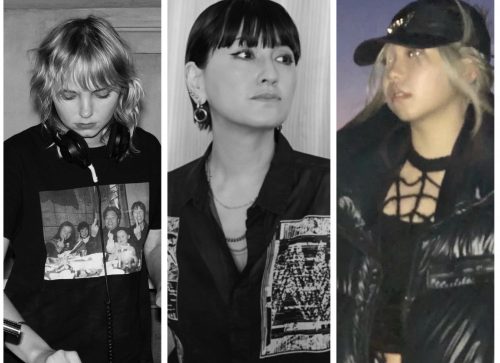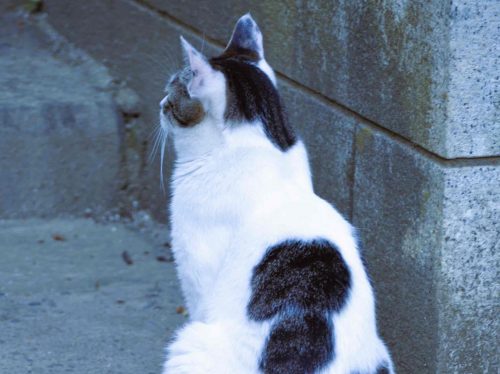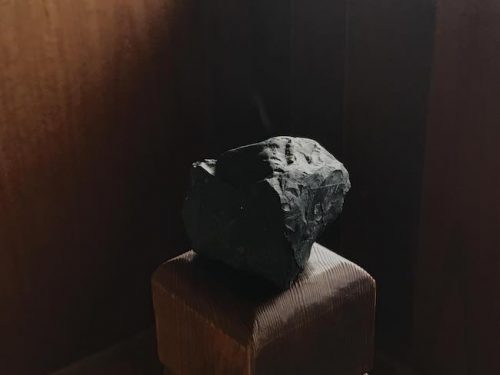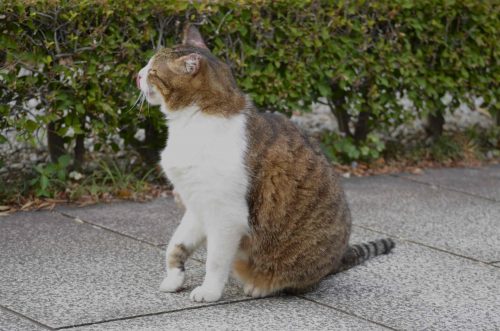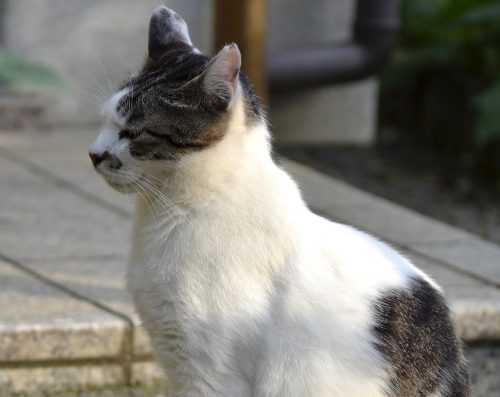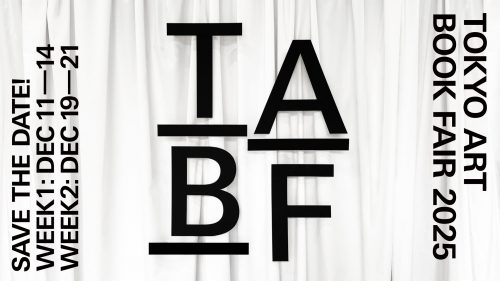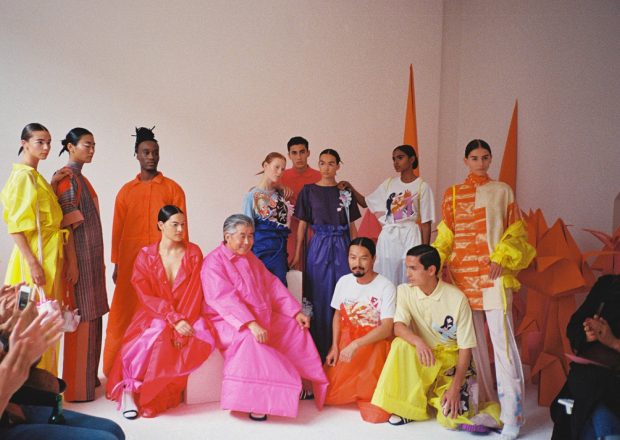
photo by Laila Cohen
Diversity and culture can be a touchy subject. As more designers take inspiration from different cultural heritages, it is becoming increasingly hard to distinguish the fine lines between appropriation and appreciation. For designer Lisa Konno however -born and raised in the Netherlands with a Japanese father- the subject of culture and the way it is perceived has become a recent fascination in her life. Nobu, a multidisciplinary project which combines fashion, film and photography to tell the story of her father, a former karate world champion is an ode to the times of difficulties but also the times of laughter during his cultural migration process. Her most recent project Baba, is the second part of this project; telling the story of Ceylan Utlu, an immigrant of Turkish heritage.
-In your project ‘Nobu’,the most recognizable piece from the collection is the oversized pink raincoat, its form taken inspiration from a dutch raincoat and the inside lining of it the fabric of a kimono. What was the creative process behind combining these specific elements from two different cultures?
Lisa: For the collection I took a lot of used kimonos and the lining of them because kimonos are made from these squares and so I used them for the lining of the raincoat.
For the entire collection, the inspiration came from my dad himself and his closet so the items he wears. A raincoat is something that is very Dutch about him that he cycles to work in this big rain poncho everyday. But he also has all of these Japanese T-shirts and so those shirts I used for the collection are items very personal to his specific story. And then there are also things I used that are not necessarily specific to him but are more cultural cliches, things that are almost overly used when it comes to Japanese designs that I purposely used. The tulips were cliches from Dutch culture so it was kind of a mix of both.
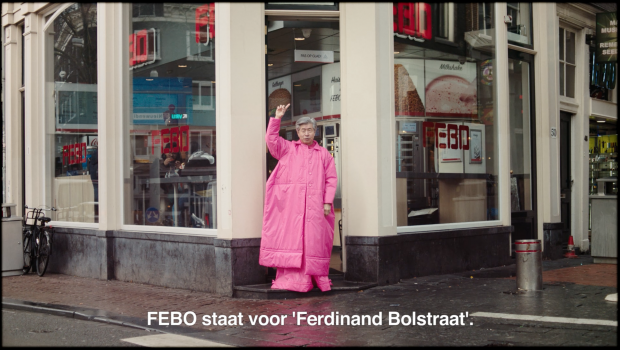
NOBU film by Sarah Blok & Lisa Konno
-One Japanese fashion cliche that many designers incorporate into their collection is obviously the garment structure, fabric and pattern of a kimono, but designers such as Maison Margiela have taken a less commonly used piece such as the tabi and redesigned it with a modern twist creating the Margiela tabi boots. What are some other Japanese fashion items do you think could be altered in recent times and become a trend?
Lisa: I think a lot of it is already heavily used and done. The geta shoes for instance, I think is also something that can be globally used and altered in a different way to suit these times. But it’s also been done before. That was why I was hesitant to use Japanese traditional clothing as inspiration because it almost felt like it was overused and kind of a cliche, put on a pedestal by the west even. So I wanted to stay away from it before making ‘Nobu’. I thought the only way for me to use them was if they were on a personal level and not about Japanese craft or design but a personal aspect to describe something about my dad as a person. And his story of integration.
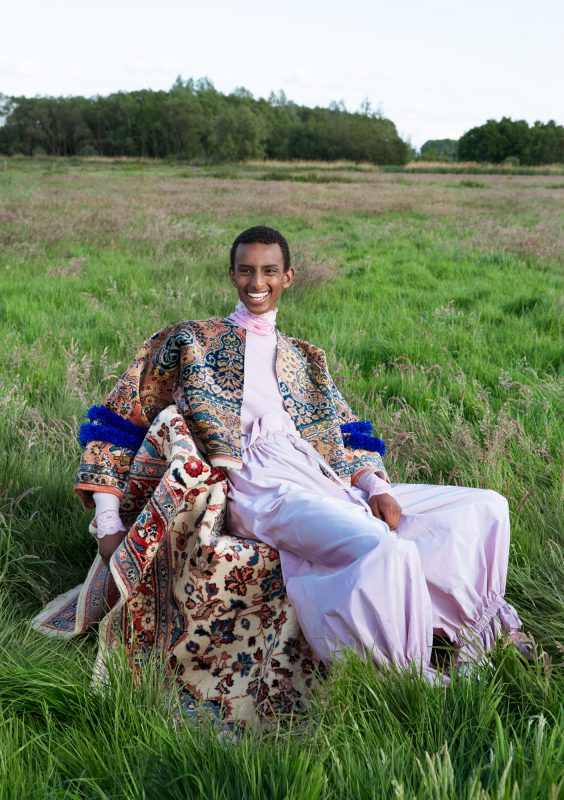
photo by Laila Cohen
-Baba is the second part of your extended multidisciplinary project the first being ‘nobu’ which tackles the topic of migration which plays a huge role in the protagonist Ceylan Utlu’s life. What drew you to Ceylan Utlu’s story that made you want to make him the protagonist of your next project?
Lisa: I made the project together with Sarah Blok, a theatre writer and film director. One of her close friends is the daughter of Ceylan. We of course started with my own father, Nobu and so the whole project started with me and Sarah working together and thinking about this concept. Then we already had in mind to expand it about these different dads with their different nationalities. So when Sarah heard a lot of stories about Ceylan, we thought he would be a nice character for the sequel because he sounded very interesting and charismatic, peculiar and had his own way of telling stories. We had some coffee whilst we talked and heard about his life story and it sounded like something that would be interesting for the sequel. We just asked him and he was very into it. I think the most interesting thing was that he was very different to my dad, Nobu but there are also similarities. Culturally the way he expresses himself is different and of course they have completely different life stories. The troubles and conflicts but also the funny things that occur with cultural misunderstandings are handled in a different way and I guess society looks at a Turkish immigrant differently to a Japanese immigrant. The way he talked about it was very interesting and I think Turkish culture is in general more expressive and emotional so he was talking much more in songs and poetic ways. That was what was interesting about him. Made a good story about him.
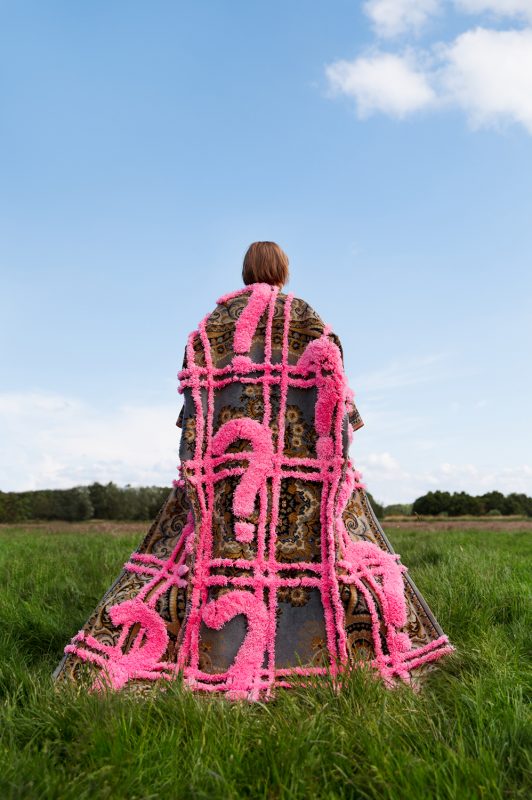
photo by Laila Cohen
-You mentioned that Ceylan and your father Nobu found different things difficult during the migration process. Can you tell me what Ceylan specifically found hard about the migration process?
Lisa: He doesn’t express anything particularly hard. I think that’s also something we wanted to find in our subjects. We thought that a lot of portraits about immigrants are very negative so we wanted to have a light hearted portrait about the immigrants and the things that are good. Of course they have some difficulties but in general I don’t think they would describe it as hard. I guess the difficulties are a lot in the relationship between him and his daughters for example. I feel like many cultures outside of the Netherlands are more prone to shift the role to take care of their parents earlier on in life and I think that is also the case in Japanese culture where the mum still lives with the eldest son but I guess it was emphasized about this part about migration and about having his child growing up in a different culture. Because the child becomes in terms of the language and the culture, the translator to the dad so I think that that was something they had experienced. I think Ceylan was welcomed when he arrived in the Netherlands because he was a musician. It was very new here to have this type of music and so he was accepted with open arms. But he also thought that he was painted as more exotic than he was, more in a stereotypical way but in a positive sense. I think my dad doesn’t really speak Dutch well but Ceylan does, he is very eloquent. And I also think that that is something to do with what we accept and how we measure if someone has successfully integrated into a new culture.
-As a person of different cultural backgrounds, hafu born and raised in the Netherlands, was there ever a time when it was hard for you to fully identify yourself in both cultures?
Lisa: I’ve never had trouble in the Netherlands. I think because I lived here and many people didn’t see me as Japanese for instance. If they did it was never a negative thing, maybe there were some jokes about stereotypes but not really. It was more the other way around. As an outsider in Japanese culture. I went to a Japanese school during childhood on the weekends and there they were much better speaking and writing in Japanese and I felt more of the negative side of being a hafu. More like an outsider. But it hasn’t brought that much difficulties. I’m glad that I was brought up by different cultures because it has broadened my perspective on what is normal and so it has given me more eyes.
-As you have lived in the Netherlands all of your life but having a mixed cultural heritage, did that increase your fascination towards the Japanese culture in a sense?
Lisa: I guess because I am not examining Dutch culture as much as I am examining Japanese culture in my perspective because I don’t live there but my fascination towards Japanese culture only grew when I got older during the last couple of years. And I think now because there is much more discussion about diversity and cultural identity and appropriation, I am much more fascinated about the culture. But I guess it’s not a fascination towards the culture itself but how the culture is perceived by the west. That is mostly where my fascinations lies. Other than that it is not really something that I think about.
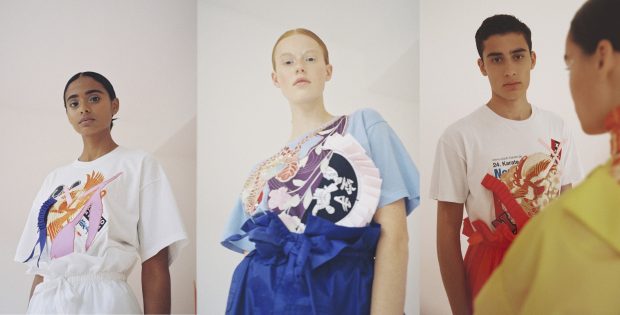
photo by Laila Cohen
Sustainability is another topic Lisa Konno cares about deeply. During Amsterdam Fashion Week in 2015, Lisa printed out blown up photographs from the Rana Plaza Disaster which devastatingly killed many workers producing clothing for fast fashion brands in Bangladesh and used it as a metaphor for the industry; a garment that is pretty at first glance is not what it seems when looked at closely.
Lisa: When I was graduating my course, I was graduating with the idea that I would like to work in fashion but I don’t want to support the system because they are over producing and exploiting people in factories. So I came up with ways to use the fashion collections to make a statement and suggest ideas I guess of how we can also handle clothes in fashion and consume it.’
Her collection ‘Your Truly’ created pattern packages and sold it for 20 euros, ironically the same amount of money you usually pay to purchase a t-shirt at H&M.
Lisa: ‘I think it first started with creating awareness about this problem and then now that there is awareness I thought what is something that can be done to involve the buyer in the process. I thought educating people on how much work is put into creating a garment is something that contributes to the idea of creating a piece of clothing that can be cherished and not only spend five euros at Primark for and that is where the idea of making a pattern package came from. It was kind of a joke because it cost 20 euros, an average price that a shirt costs in H&M so it was about the fact that you can buy this shirt for 20 euros from me but you only buy the idea and you have to put in the effort and the materials yourself and so that is where that came from.
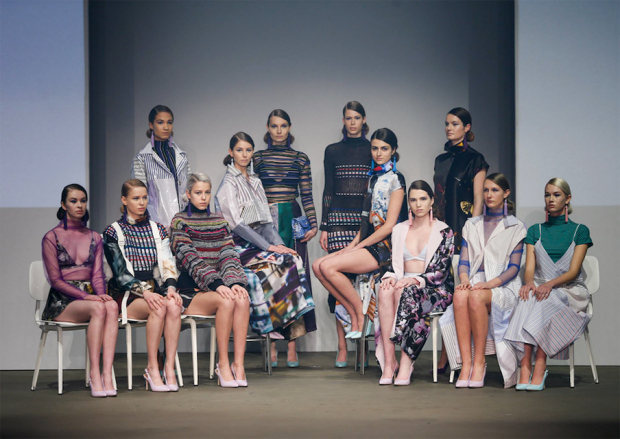
photo by Team Peter Stigter
‘Collect’ enabled consumers to take part in the creative process so they could personally adjust a part of the clothing to make it customizable.
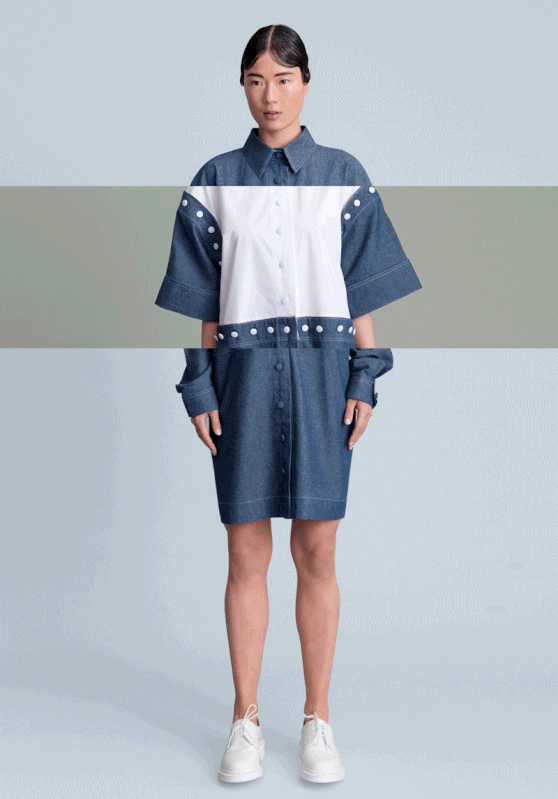
Photo by Peggy Kuiper
Lisa: ‘The idea came from my friend, Karin Vlug who also had an idea of how we could make something that lasts longer while at the same time not being timeless and boring. Because the idea of being attracted to fashion is about changing and being different in different times and not being timeless and the fact that it changes in a few years so how we could maintain that whilst not exploiting materials. So we thought about this Lego or Ikea way of keeping the base but being able to change the color, the sleeve or the width of it to also involve the wearer more because you feel like more of the designer when you are contributing to it.’
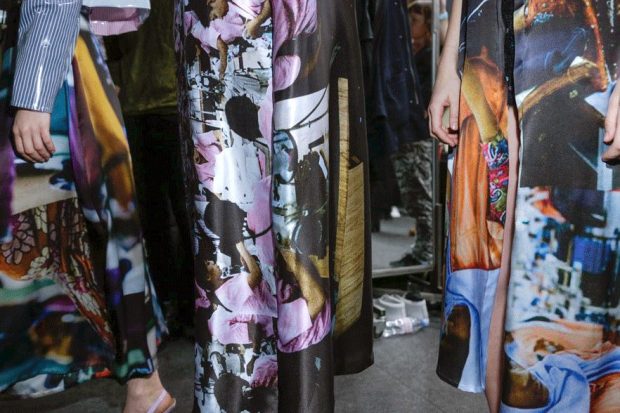
photo by Team Peter Stigter
-What do you think in terms of governmental policies, big businesses regarding their supply chains as well as consumers needs to change the most ?
I think fashion is such a global industry, it’s hard to become transparent because there are so many companies in different countries. But I do think there is a huge responsibility for governments to be more demanding when it comes to transparency within companies. For example, encouraging companies to make their products more in Europe. So that is something I think is a big responsibility for the government to do. Aside from that, I think there is a huge responsibility for huge commercial brands like H&M and Zara to have their own factories and have control over their working conditions. Because they work with factories that they don’t own, they just send off work to them and then that factory sends off work to another factory. That is why there is little control over the process. They should take control and only produce in factories that they have control over and that’s the only way to truly change the industry.
text Ayana Waki
Lisa Konno
Lisa Konno graduated at the Fashion Design department of Artez in Arnhem. Currently based in Amsterdam, she continues to experiment with new ways and techniques to develop fashion.
http://www.lisakonno.com/home/
https://www.instagram.com/lisakonno/
.nl Issue: 移民の物語を映像とファッションで伝え続ける、日本とオランダのハーフとして生まれたデザイナーのLisa Konno/Interview with designer, Lisa Konno
1 2

